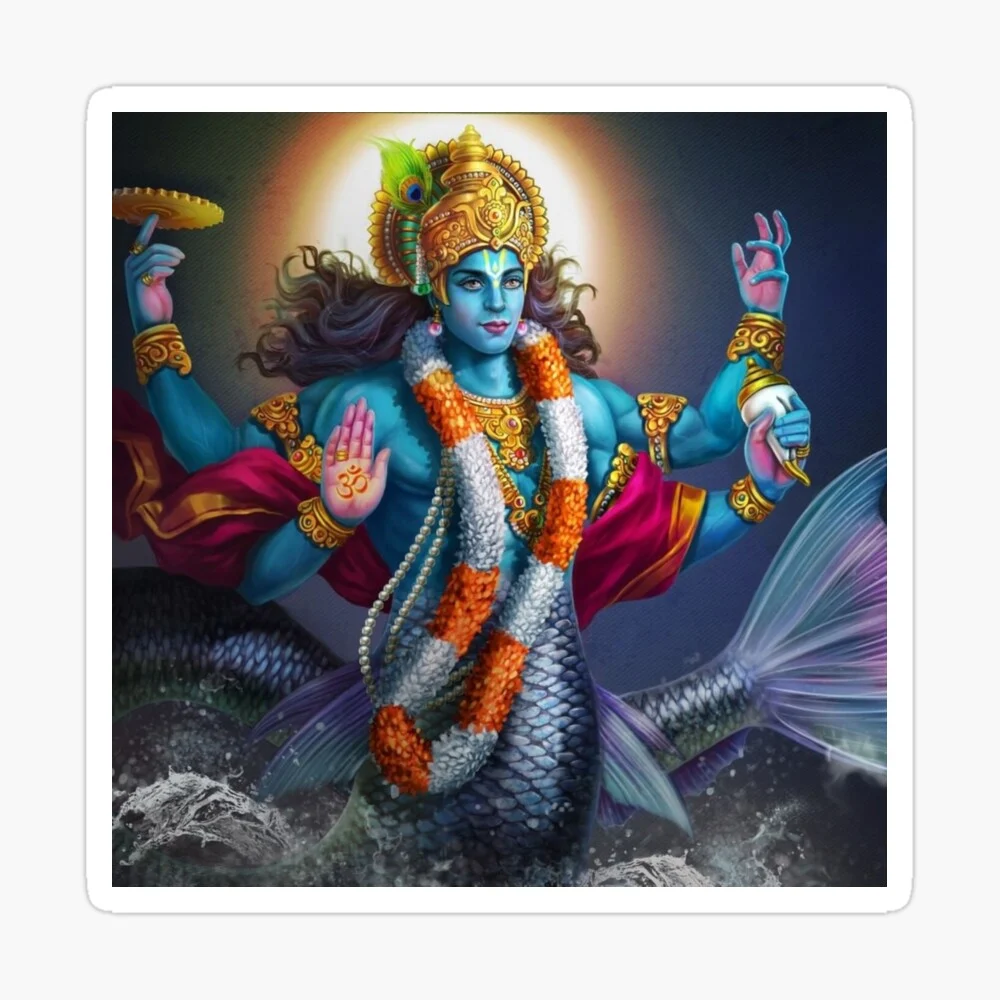
DASHAVTAR OF LORD VISHNU
10 Avatars of lord vishnu:
Introduction :
Lord Vishnu is one of the three major deities, along with Brahma and Shiva, and is considered as the preserver of the universe. He is often depicted with blue skin, holding a conch shell, a discus, and a mace, and resting on the coiled serpent, Shesha.
Lord Vishnu is often associated with qualities such as mercy, compassion, and protection, and is worshipped by millions of people around the world. His various incarnations and stories are celebrated in Hindu festivals, scriptures, and art, and his devotees seek his blessings for prosperity, happiness, and spiritual enlightenment.
His ten major incarnations, known as the Dashavatar, include:
- Matsya (The Fish)
- Kurma (The Turtle)
- Varaha (The Boar)
- Narasimha (The Half-Man & Half-Lion)
- Vamana (The Dwarf)
- Parashurama (The Warrior With An Axe)
- Rama (The Prince & King)
- Krishna (The Cowherd & Teacher)
- Buddha (The Founder Of Buddhism)
- Kalki (The Future Avatar)
Let’s talk about these avatars:
- Matsya (The Fish):
- First avatar of lord vishnu.
- Matsya is associated with the great flood. According to the story, a demon named Hayagriva stole the Vedas, the sacred Hindu texts, and plunged them into the depths of the ocean. To retrieve them, Lord Vishnu took the form of Matsya and swam into the ocean to rescue them.
- Another version of the story says that during a great deluge, Lord Vishnu appeared as Matsya and saved the first human, Manu, along with other living beings by guiding them to safety on a boat.
- Matsya is often depicted as a half-fish, half-human creature, with a fish body and a human head and torso. He is usually depicted holding a conch shell and a discus in his hands.
- Matsya is considered as the symbol of knowledge, and is said to represent the beginning of creation and evolution.
- Matsya is celebrated in the Matsya Jayanti festival, which is celebrated on the day of the full moon in the Hindu month of Chaitra (March-April). Devotees worship Lord Vishnu in the form of Matsya and offer prayers for prosperity and well-being.
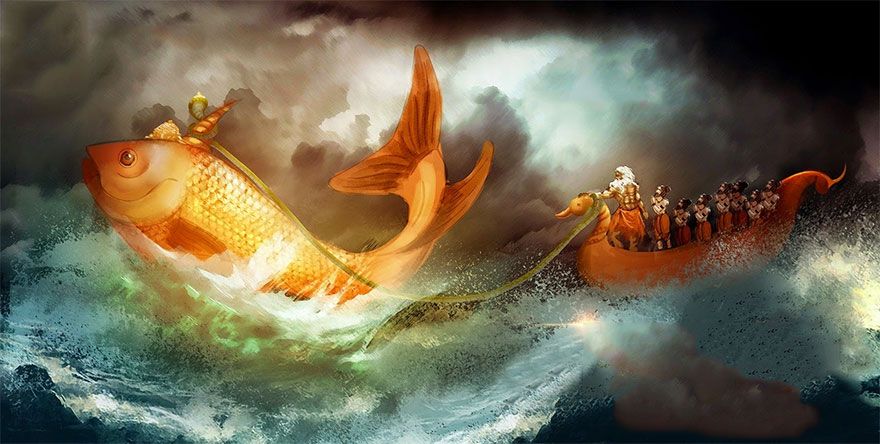
2. Kurma (The Turtle):
- second avatar of lord vishnu.
- Kurma is associated with the churning of the ocean (Samudra Manthan). According to the story, the gods and demons churned the ocean to obtain the nectar of immortality (Amrit). Kurma helped by serving as a pivot point for the mountain used in the churning.
- Kurma is often depicted as a half-tortoise, half-human creature, with a tortoise shell as his body and a human head and limbs. He is usually depicted holding a conch shell and a discus in his hands.
- Kurma is considered as the symbol of stability, and is said to represent the support of the earth and the universe.
- Kurma is celebrated in the Kurma Jayanti festival, which is celebrated on the day of the full moon in the Hindu month of Vaishakha (April-May). Devotees worship Lord Vishnu in the form of Kurma and offer prayers for strength and stability.
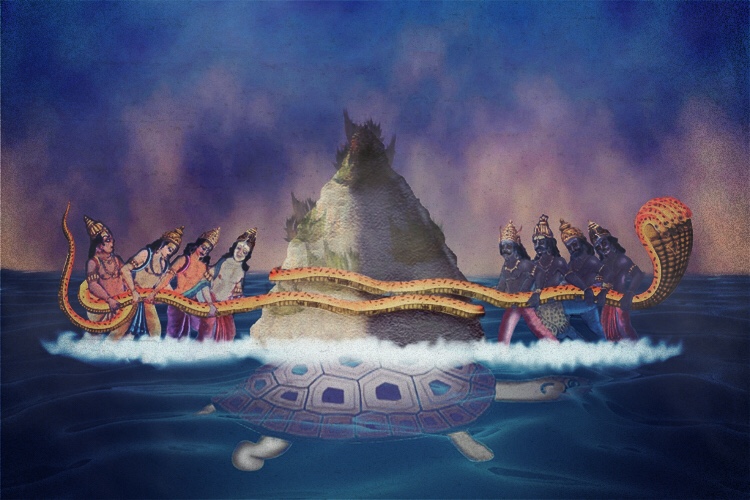
3. Varaha (The Boar):
- Third avatar of lord vishnu.
- Varaha is associated with the rescue of the earth. According to the story, a demon named Hiranyaksha had abducted the earth and hidden it in the depths of the ocean. Lord Vishnu took the form of a boar and dived into the ocean to rescue the earth.
- Varaha is often depicted as a half-boar, half-human creature, with a boar’s head and a human body. He is usually depicted holding a conch shell and a discus in his hands.
- Varaha is considered as the symbol of strength and courage, and is said to represent the primal force that lifts the earth from the depths of chaos and darkness.
- Varaha is celebrated in the Varaha Jayanti festival, which is celebrated on the day of the third lunar day of the bright fortnight in the Hindu month of Bhadrapada (August-September). Devotees worship Lord Vishnu in the form of Varaha and offer prayers for protection and well-being.
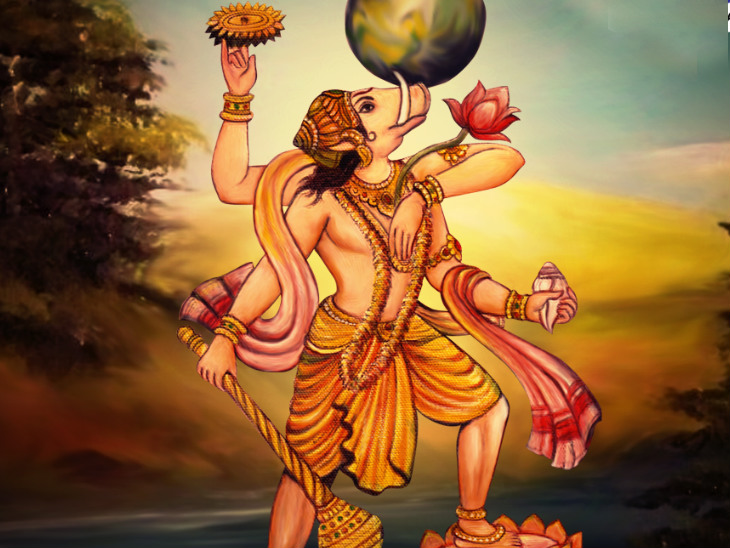
4. Narasimha (The Half-Man & Half-Lion):
- Fourth avatar of lord vishnu.
- Narasimha is associated with the demon king Hiranyakashipu. According to the story, Hiranyakashipu had obtained a boon from Lord Brahma that made him virtually invincible. He had become arrogant and demanded that his subjects worship him instead of Lord Vishnu. To defeat Hiranyakashipu, Lord Vishnu took the form of Narasimha and killed him.
- Narasimha is often depicted as a half-man, half-lion creature, with a lion’s head and claws and a human body. He is usually depicted holding a conch shell and a discus in his hands.
- Narasimha is considered as the symbol of protection and righteousness, and is said to represent the balance between the human and animal worlds.
- Narasimha is celebrated in the Narasimha Jayanti festival, which is celebrated on the fourteenth day of the bright fortnight in the Hindu month of Vaishakha (April-May). Devotees worship Lord Vishnu in the form of Narasimha and offer prayers for protection and courage.
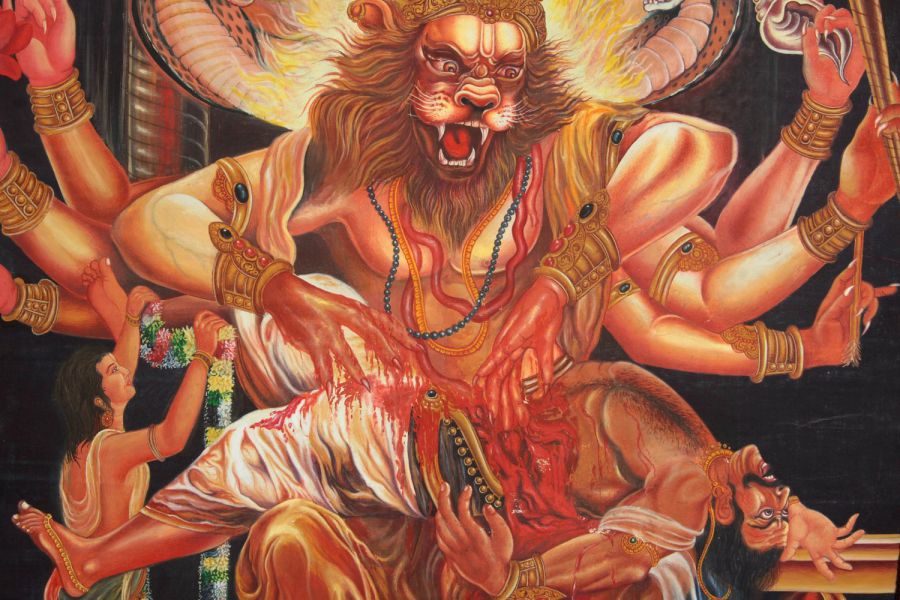
5. Vamana (The Dwarf):
- Fifth avatar of lord vishnu.
- Vamana is associated with the demon king Bali. According to the story, Bali had become invincible and had gained control of the three worlds. To defeat Bali, Lord Vishnu took the form of Vamana, a dwarf Brahmin, and asked for three steps of land from Bali. Bali granted the request, and Vamana grew in size to cover the earth, the skies, and the entire universe, thereby defeating Bali.
- Vamana is often depicted as a dwarf Brahmin, with a sacred thread and a water pot in his hands. He is usually shown standing on one foot, with the other foot raised to take the next step.
- Vamana is considered as the symbol of humility and sacrifice, and is said to represent the victory of righteousness over arrogance.
- Vamana is celebrated in the Vamana Jayanti festival, which is celebrated on the twelfth day of the bright fortnight in the Hindu month of Bhadrapada (August-September). Devotees worship Lord Vishnu in the form of Vamana and offer prayers for humility and prosperity.
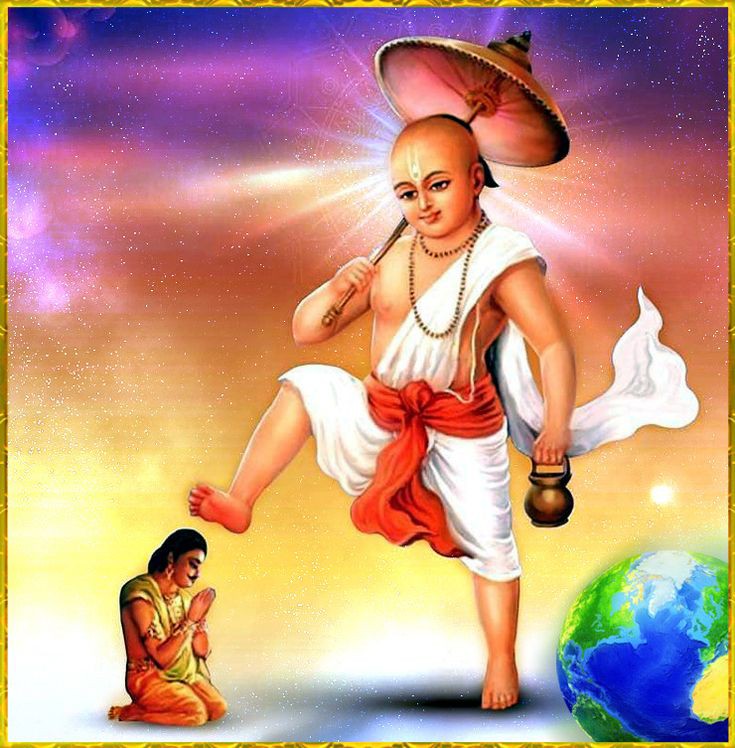
6. Parashurama (The Warrior With An Axe):
- Sixth avatar of lord vishnu.
- Parashurama is associated with the destruction of the Kshatriya clan. According to the story, the Kshatriya clan had become corrupt and oppressive, and Lord Vishnu took the form of Parashurama to rid the earth of their tyranny. Parashurama is said to have destroyed the Kshatriya clan twenty-one times with his axe.
- Parashurama is often depicted as a warrior sage, with an axe in his hand and matted hair on his head. He is usually shown wearing a deer skin and carrying a bow and arrows.
- Parashurama is considered as the symbol of power and knowledge, and is said to represent the ideals of discipline and devotion.
- Parashurama is celebrated in the Parashurama Jayanti festival, which is celebrated on the third day of the bright fortnight in the Hindu month of Vaishakha (April-May). Devotees worship Lord Vishnu in the form of Parashurama and offer prayers for strength and courage.
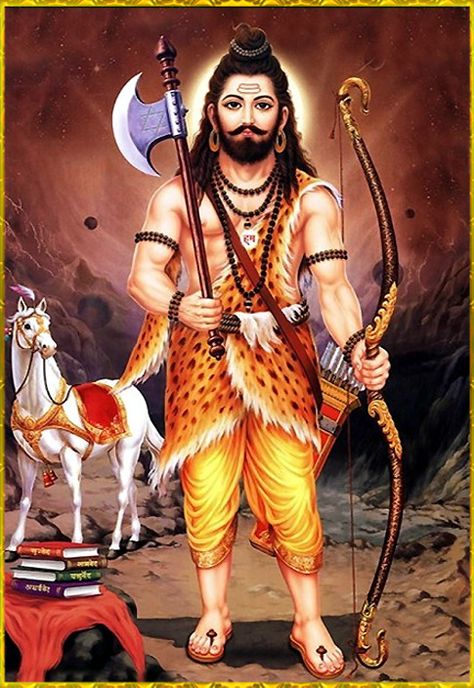
7. Rama (The Prince & King):
- Seventh avatar of lord vishnu.
- Ram is associated with the epic story of Ramayana, which tells the tale of his journey to rescue his wife Sita from the demon king Ravana. The story is revered as one of the greatest and is considered as a source of spiritual and moral guidance.
- Ram is often depicted as a prince, with a bow and arrow in his hands, and is accompanied by his brother Lakshmana and god Hanuman. He is considered as a role model for his unwavering devotion to duty, respect for elders, and love for his subjects.
- Ram is also associated with the festival of Diwali, which celebrates the victory of good over evil. Diwali marks the return of Ram, Sita, and Lakshmana to their kingdom of Ayodhya after defeating Ravana.
- Ram is considered as the embodiment of truth, righteousness, and compassion, and is worshipped by millions of people around the world. His teachings and stories continue to inspire people to lead a life of virtue and spirituality.

8. Krishna (The Cowherd &Teacher):
- Eighth avatar of lord vishnu.
- Krishna is a major deity in Hinduism, who is worshipped as the eighth avatar of the god Vishnu. He is considered to be a supreme being and is often referred to as “Lord Krishna“. He was born in Mathura to Devaki and Vasudeva, but was brought up in Gokul by his foster parents Nanda and Yashoda.
- Krishna is known for his role in the epic Mahabharata, in which he serves as the charioteer and advisor to the warrior Arjuna. He is also the central figure in the Bhagavad Gita, a sacred text of Hinduism in which he imparts teachings on the nature of life, the universe, and the soul.
- Krishna is depicted in Hindu art and literature in a variety of forms, including as a cowherd, a warrior, and a philosopher. He is often portrayed as playing a flute and surrounded by cows and gopis (milkmaids) in his depictions. His life and teachings have had a significant impact on Indian culture and spirituality.

9. Buddha (The Founder Of Buddhism):
- Ninth avatar of lord vishnu.
- Buddha was born as Prince Siddhartha Gautama in ancient India, and lived during the 6th century BCE. He was born into a royal family, but renounced his wealth and status in search of spiritual truth and enlightenment.
- Buddha spent several years in meditation and spiritual practice, eventually reaching a state of enlightenment, or nirvana, under the Bodhi tree in Bodh Gaya, India. He then spent the rest of his life teaching others about the path to liberation from suffering.
- Buddha’s teachings, known as the Dharma, emphasize the Four Noble Truths and the Eightfold Path. They emphasize the importance of self-awareness, compassion, and right action, and are intended to help individuals achieve liberation from the cycle of birth, death, and rebirth.
- Buddha is often depicted with a serene expression, sitting in the lotus position with his eyes closed in meditation. He is usually shown with elongated earlobes, a symbol of his noble birth, and a topknot of hair, representing his spiritual power.
- Buddha is revered by many Hindus as a spiritual guide, and his teachings continue to inspire people of all faiths to lead a life of compassion, mindfulness, and spiritual growth.
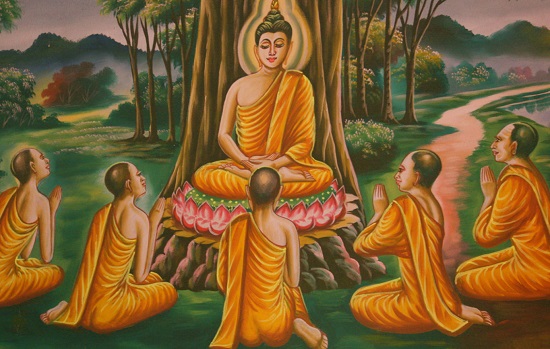
10. Kalki (The Future Avatar):
- Tenth and future avatar of lord vishnu
- Kalki is said to appear on a white horse, wielding a blazing sword, to rid the world of evil and restore righteousness. He is considered as the final incarnation of Lord Vishnu, and is associated with the end of the current cycle of creation and the beginning of a new one.
- Kalki is associated with several prophecies and stories, such as the Kalki Purana and the Vishnu Purana. These texts describe his birth, his mission to restore Dharma, or righteousness, and his eventual departure from the world.
- Kalki is also associated with the destruction of the world, or Pralaya, which is said to occur at the end of the Kali Yuga. However, this destruction is seen as a necessary step in the cycle of creation, as it paves the way for a new era of enlightenment and spiritual growth.
- Kalki is revered by many Hindus as a symbol of hope and renewal, and his teachings continue to inspire people to lead a life of virtue and spiritual growth.
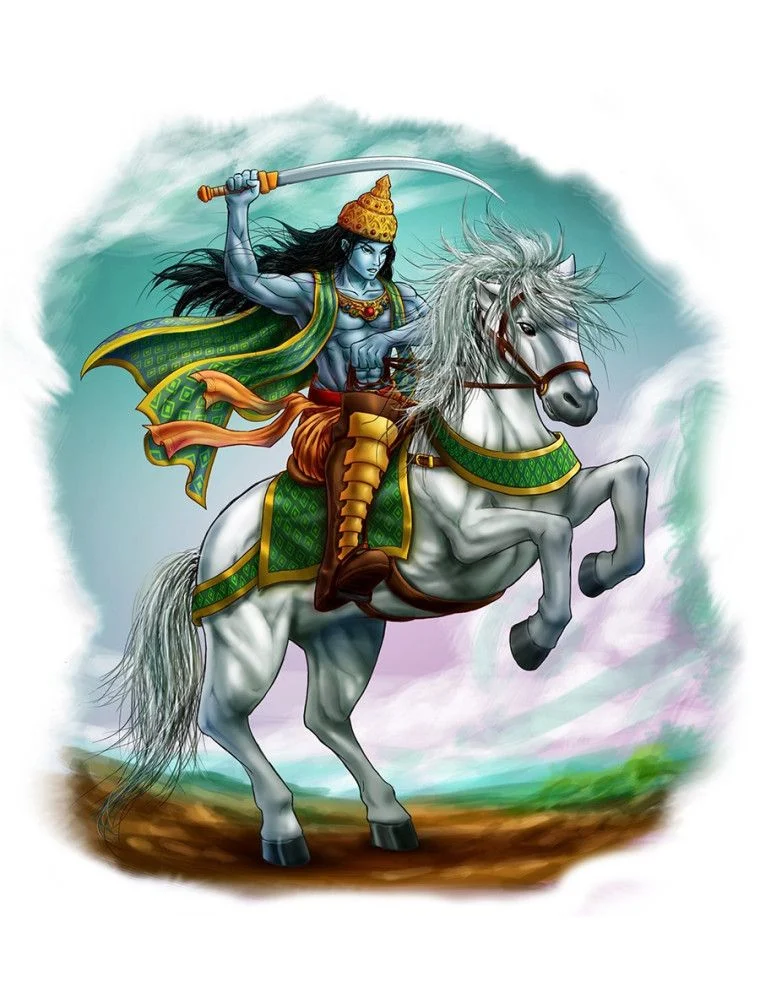
Lord vishnu benevolent and compassionate deity who protects and preserves the world.